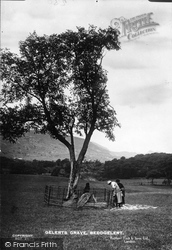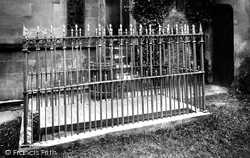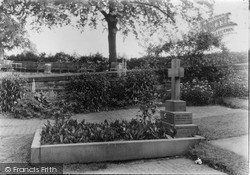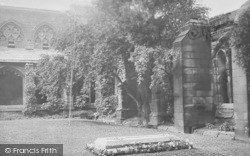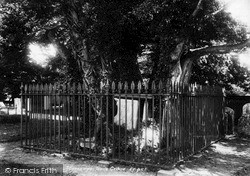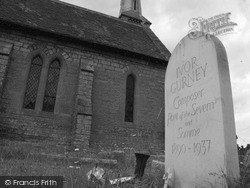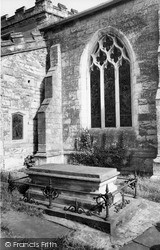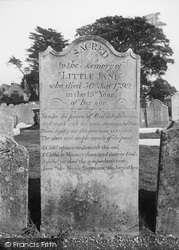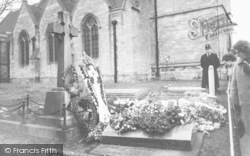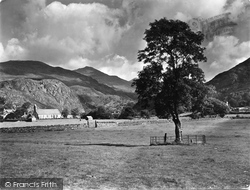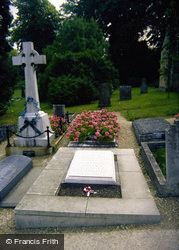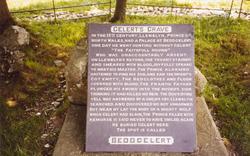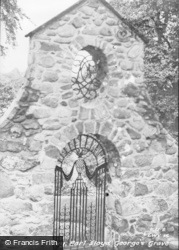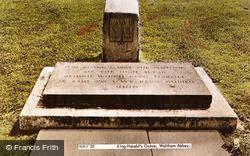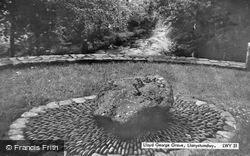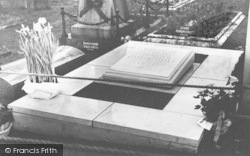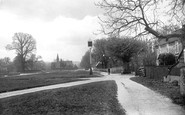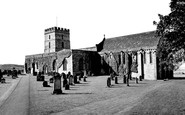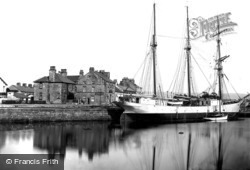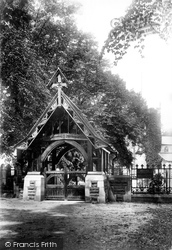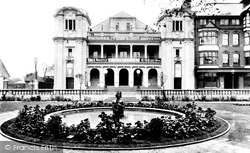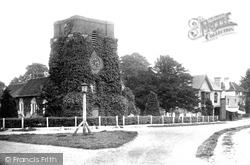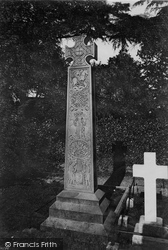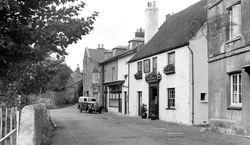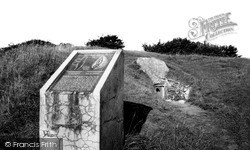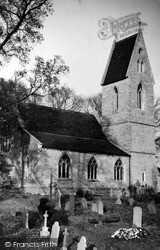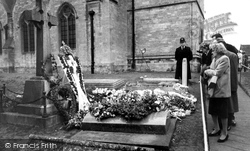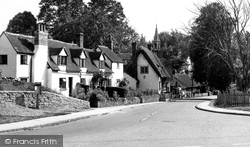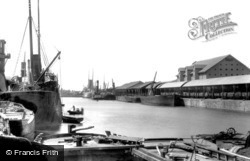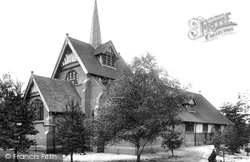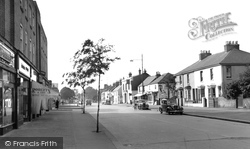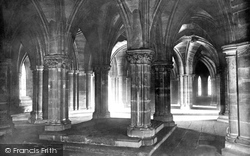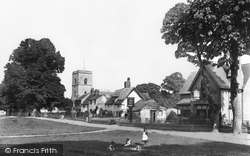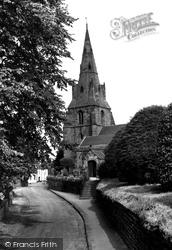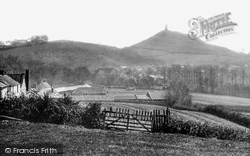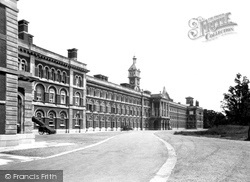Places
1 places found.
Those places high-lighted have photos. All locations may have maps, books and memories.
Photos
128 photos found. Showing results 61 to 80.
Maps
222 maps found.
Books
1 books found. Showing results 73 to 1.
Memories
531 memories found. Showing results 31 to 40.
The 1940s
Hi all. My name is John Potter. I have found out the last address of my Gran and Grandad Hollands, at 78 High Street, Halling. I remember going across a bridge past the graves in a wood on the right to the allotments to help my ...Read more
A memory of Halling in 1940 by
The Artichoke On The Green
I used to walk or ride my bike past the Artichoke public house almost daily while running errands from the small group of shops opposite the church. There used to be a small cycle shop, news agent, grocers shop, and ...Read more
A memory of Croxley Green in 1950 by
Alice Eastwood Nee Colthup
My great aunt Alice was a teacher at Five Ashes village school in the early years of the 20th century. She was born in New Brompton, Kent on 29.8.1879 and died 23.12.1966 and is buried in the village. She married Fred ...Read more
A memory of Five Ashes in 1900 by
Grace Darling's Tomb
Visiting the Grace Darling Musuem, then her grave in the churchyard opposite, was an annual event while on holiday on the Northumberland coast. Peering through the bars around the tomb I was often reminded of how my ...Read more
A memory of Bamburgh in 1968 by
Farming Pub And Family
Because of the rural nature of Llanfihangel GM memories stretch across the village hub - the Crown pub on the bend by the bridge through to the small cemetary near Ty Ucha farm - through to Cerrigydruddion and ...Read more
A memory of Llanfihangel Glyn Myfyr by
Warden Point
I used to live in Cherry Tree Cottage, Warden Point in 1930, my father was Jock Martin, a sergeant in the R.A.F. stationed in Eastchurch. My mother was Phylis Woollett, daughter of Frank Woollett, mine host of the Crooked Billet. ...Read more
A memory of Warden in 1930 by
My Uncles Grave
This isnt really a memory as such but I'm after some help if anyone can. My uncle died before I was born and he was buried in Worfield. I know from my aunty that he isn't buried in the main graveyard but further up the hill, in a ...Read more
A memory of Worfield in 1960 by
The Rone Clarke Family Rose Cottage Bristol Road Bournbrook Birmingham
My great-great-grandfather was CHARLES RONE CLARKE born 6 March 1837 at 13 Court, Smallbrook Street, Birmingham. He was a master woodturner and sixth great-grandson of Henry ...Read more
A memory of Bournbrook in 1860 by
Carol Singing
I too rememeber Rev Milner and his wife also going carol singing down Knatts valley before the war. Does anyone remember Mr Rudd who looked after the greens at Woodlands golf course, a little short chap he was? Also any ...Read more
A memory of Knatts Valley in 1930 by
James Roberts
I have a photo of a grave in Llangristiolus in Wales and buried in it is James Roberts, died 4th Nov 1844 aged 45 years, and his daughter Susannah, died 28th Nov 1844 aged 4 years. Does anybody know if this grave is still ...Read more
A memory of Llangristiolus in 1860 by
Captions
197 captions found. Showing results 73 to 96.
At the time of our photograph, ship repairing was still going on at Glasson, and the graving or dry dock was still in use.
You can see the iron railings around his grave at the bottom left of our picture. The church is built in Perpendicular style.
In 1914 the Palladium was offering a picture show every afternoon and George Graves & Co twice nightly.
In its churchyard is the grave of the Victorian poet Matthew Arnold, with an epitaph which reads 'Awake, thou Lute and Harp - I will awake right early'.
This Celtic-style monument in the Lake District marks the grave of John Ruskin, the artist and philosopher, who helped to bring about the Gothic revival in Victorian architecture and a resurgance of interest
In the churchyard lies the grave of the Victorian admiral Sir John Baird, who died in 1908.
The story goes that in the 17th century the land on which this ancient monument stood belonged to a woman named Hetty Pegler, who enjoyed nothing more than to sit on the pagan grave and sing.
Garboldisham is steeped in ancient history: there is a defensive earth work here known as the Devil's Dyke, and a mound traditionally supposed to be the grave of Boudicca, Queen of the Iceni.
glance the church's most striking feature appears to be the contrasting steep and shallow pitched roofs; but a closer look identifies the ancient stone column of an Ibric cross (furthest in second row of graves
At the time of our photograph, ship repairing was still going on at Glasson, and the graving or dry dock was still in use.
The family plot also contains the graves of Randolph and Jennie Churchill, the parents of Sir Winston.
Near the porch of the church there is a stone marking the grave of William Dyke, who is reputed to have started the Battle of Waterloo when he accidentally fired his musket.
In 1902 work began on the King Edward Dock; an 875ft graving dock was added, and an oil tank farm comprising 27 storage tanks was completed in 1911.
His grave, in St Peter's, Frimley, contains a cross made up of wood from that ship.
Nearby there is a large old cemetery and chapel, with many graves of the wealthy. In the picture we can see that the motor age is beginning.
In the churchyard lies the grave of Maria Rathbone, a little girl who died having lost her way home and whose body was recovered several weeks later as the result of a dream by a stranger.
In the centre of the crypt is the site of the tomb of St Kentigern (St Mungo) and it was over his grave that the first church was erected.
Behind that stands a ruined chapel, perhaps two centuries older, and below it are eight remarkable shallow graves cut into the headland rock, possibly the tombs of priests or chiefs.
The lovely timber porch was left relatively untouched, however; and a grave-slab from an earlier church has recently been discovered beneath the pews. The rectory burned down in the 1950s.
Once a royal manor, until Henry II gave it to the Courtenays, the village of Sutton Courtenay has several notable buildings.
It is inscribed on his brass grave plate that he saw his son's son's son settled in Hooton, and was the oldest Knight in all England.
The monks of the abbey reputedly found his grave in Glastonbury. The building on top of the tor is St Michael's Church.
In the 1930s an excavation in the local churchyard unearthed a mass grave in which many of the skulls had a single bullet hole in the forehead – this macabre discovery was dated to the Civil
It was Queen Victoria who originally argued the need for such a hospital; its objective was to care for the gravely-afflicted casualties of war.The building attracted criticism, and a mix-up with
Places (1)
Photos (128)
Memories (531)
Books (1)
Maps (222)


